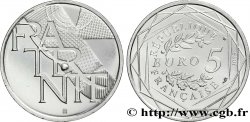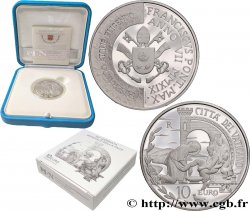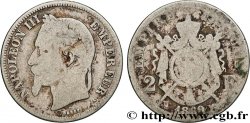E-auction 641-646314 - DAUPHINÉ - FRANCIS II, DAUPHIN François II, dauphin 1555
You must signin and be an approved bidder to bid, LOGIN TO BID. Accounts are subject to approval and the approval process takes place within 48 hours. Do not wait until the day a sale closes to register. Clicking on « bid » constitutes acceptance of the terms of use of cgb.fr private e-auctions.
Bids must be placed in whole Euro amounts only. The sale will start closing at the time stated on the item description; any bids received at the site after the closing time will not be executed. Transmission times may vary and bids could be rejected if you wait until the last second. For further information ckeck the E-auctions F.A.Q.
NO BUYER'S FEE.
NO BUYER'S FEE.
Type : François II, dauphin
Date: 1555
Metal : brass
Diameter : 28 mm
Orientation dies : 9 h.
Weight : 4,41 g.
Edge : lisse
Puncheon : sans poinçon
Rarity : R1
Coments on the condition:
Patine hétérogène avec une forte usure, quelques coups et rayures. Taches d’oxydation
Catalogue references :
Obverse
Obverse legend : + FRANCISCVS. DELPHINVS. VIENENSIS..
Obverse description : Écu écartelé aux 1 et 4 de France, aux 2 et 3 de Dauphiné sous une couronne ouverte.
Obverse translation : (François, dauphin de Viennois).
Reverse
Reverse legend : + INTER. ECLIPSES. EXORIOR. - 1555.
Reverse description : Trois tiges de lis naturel entre le soleil et la lune.
Commentary
Deux exemplaires identiques se trouvent, l’un dans la collection Chaper, l’autre au Cabinet des médailles de Paris. De Bie, Histoire de la France métallique, Paris, 1636 donne la description suivante du revers : “le corps est de trois lis tigés naissans de terre, au-dessus desquels paroist en la région de l’air un soleil en aspect sextil avec la lune”.
Two identical examples are found, one in the Chaper collection, the other in the Cabinet des médailles in Paris. De Bie, Histoire de la France métallique, Paris, 1636 gives the following description of the reverse: “the body is three stemmed lilies arising from the earth, above which appears in the air region a sun in sextile aspect with the moon”
Two identical examples are found, one in the Chaper collection, the other in the Cabinet des médailles in Paris. De Bie, Histoire de la France métallique, Paris, 1636 gives the following description of the reverse: “the body is three stemmed lilies arising from the earth, above which appears in the air region a sun in sextile aspect with the moon”








 Report a mistake
Report a mistake Print the page
Print the page Share my selection
Share my selection Ask a question
Ask a question Consign / sell
Consign / sell
 Full data
Full data












